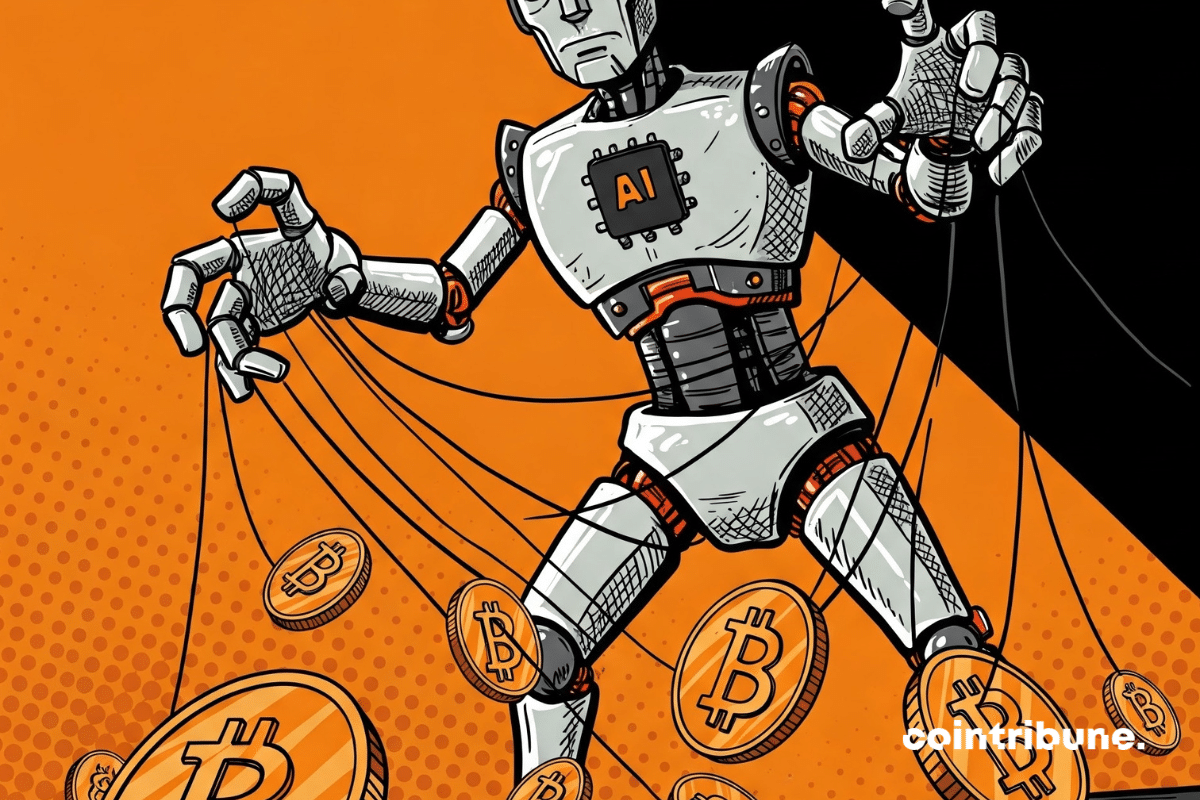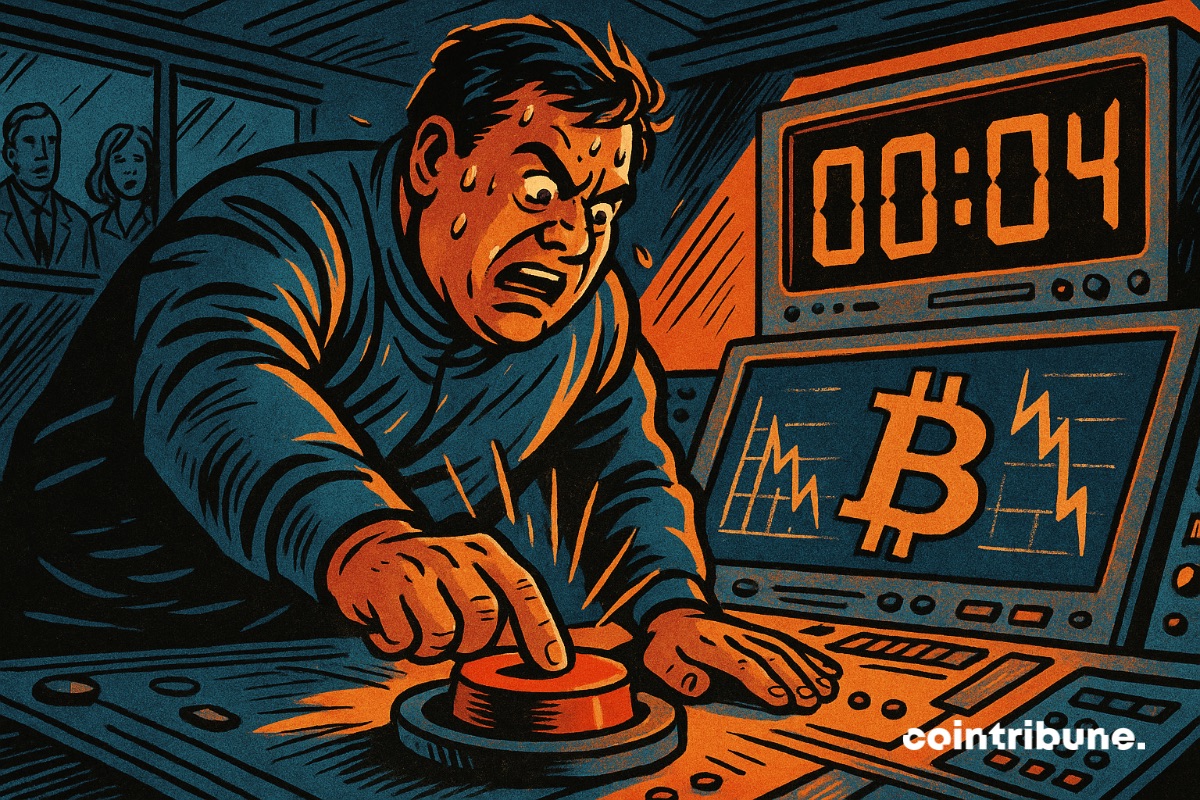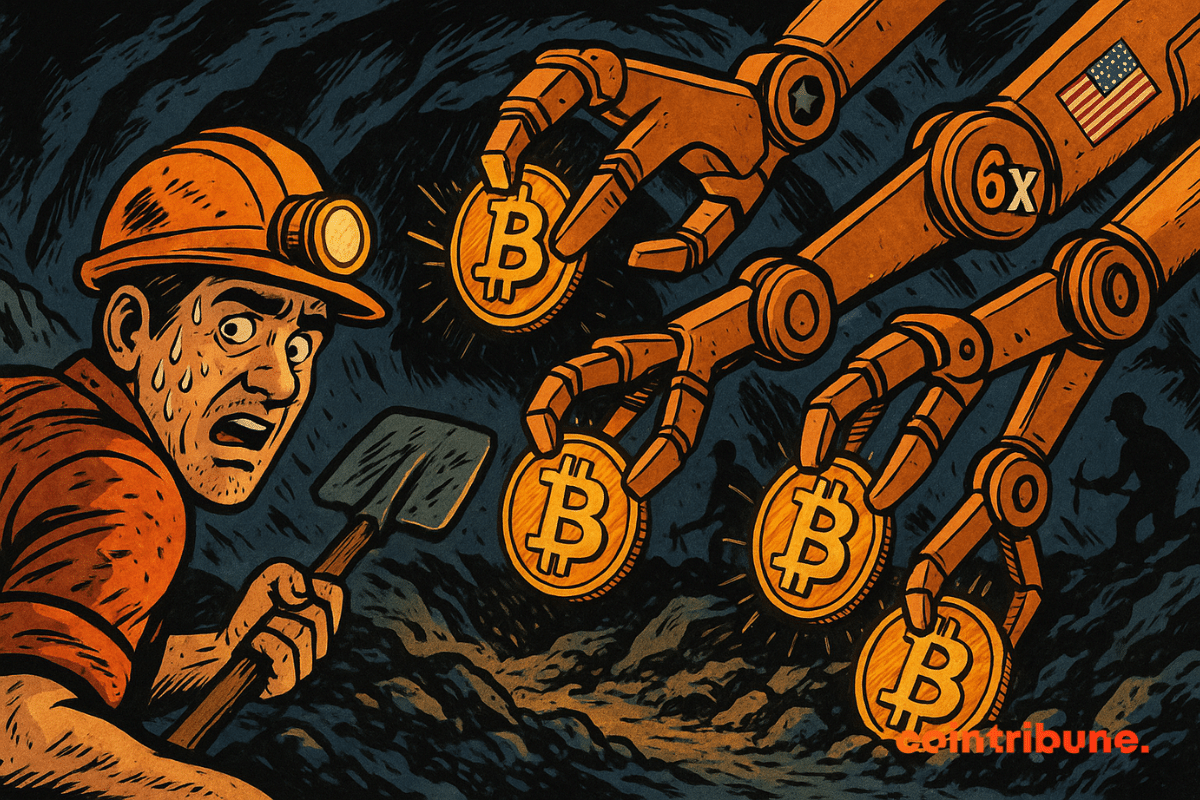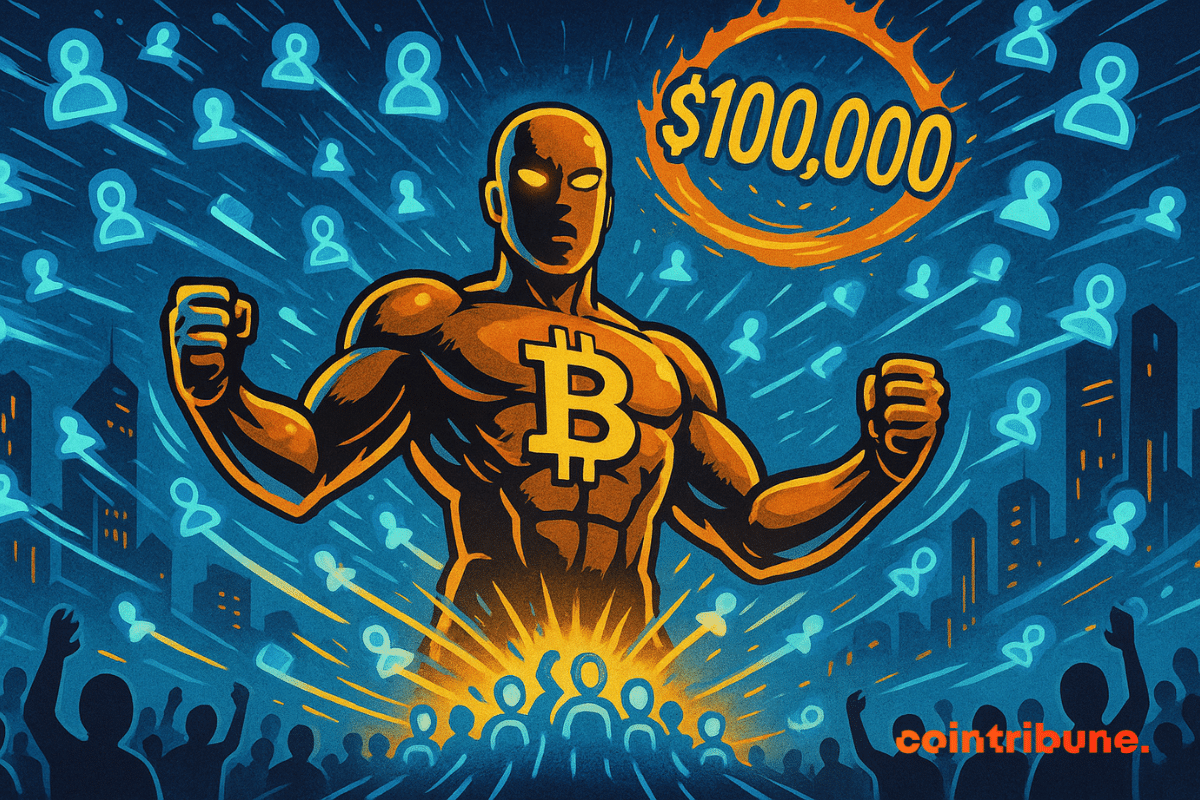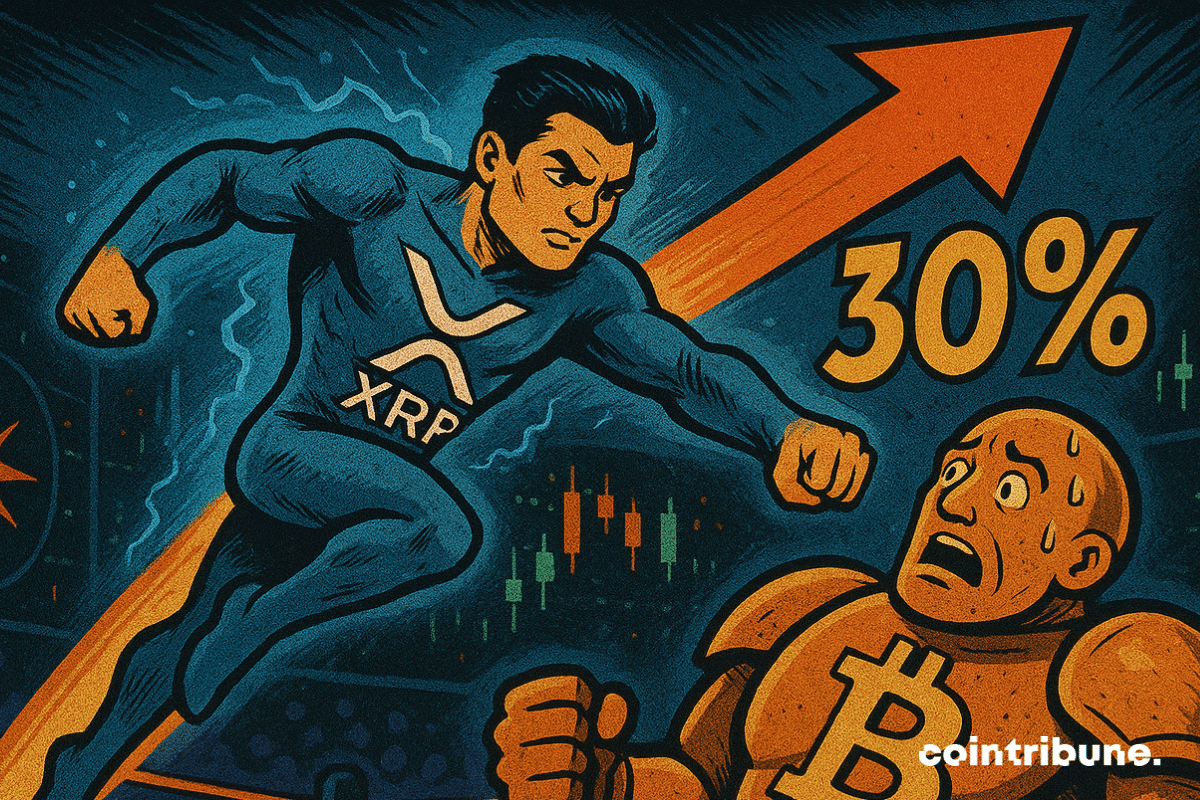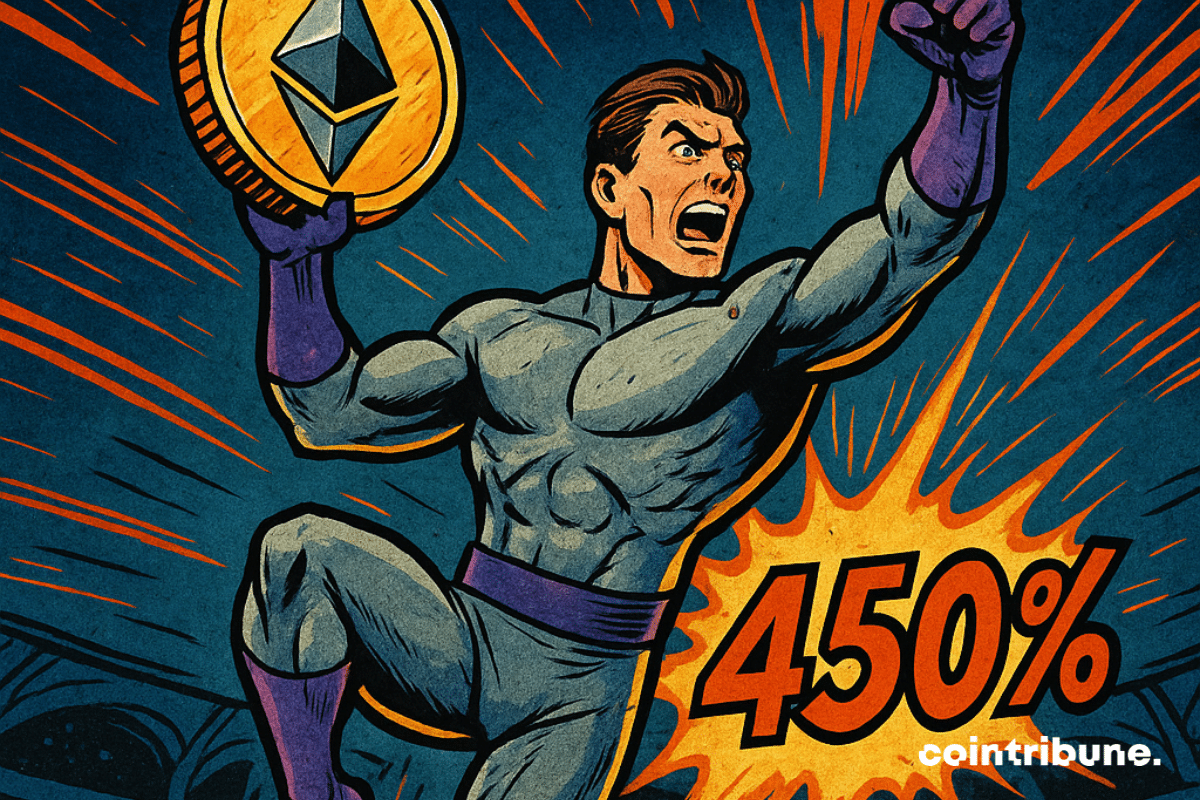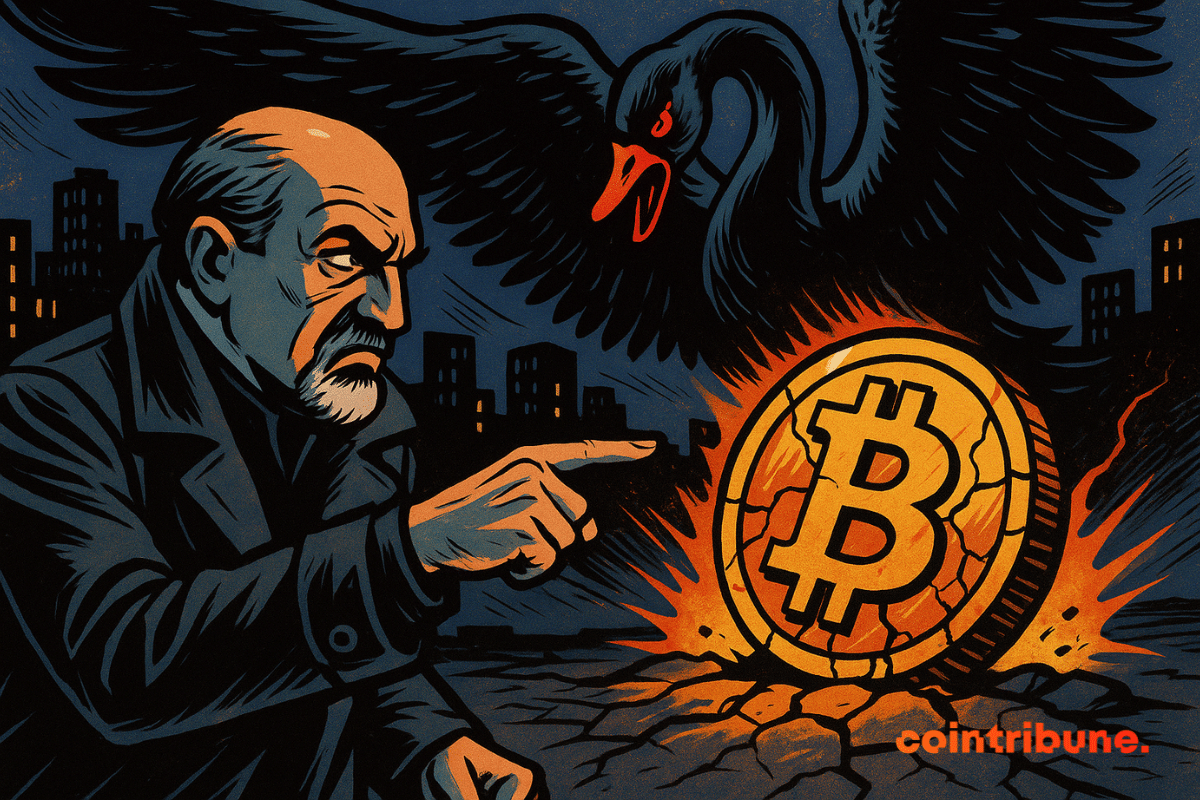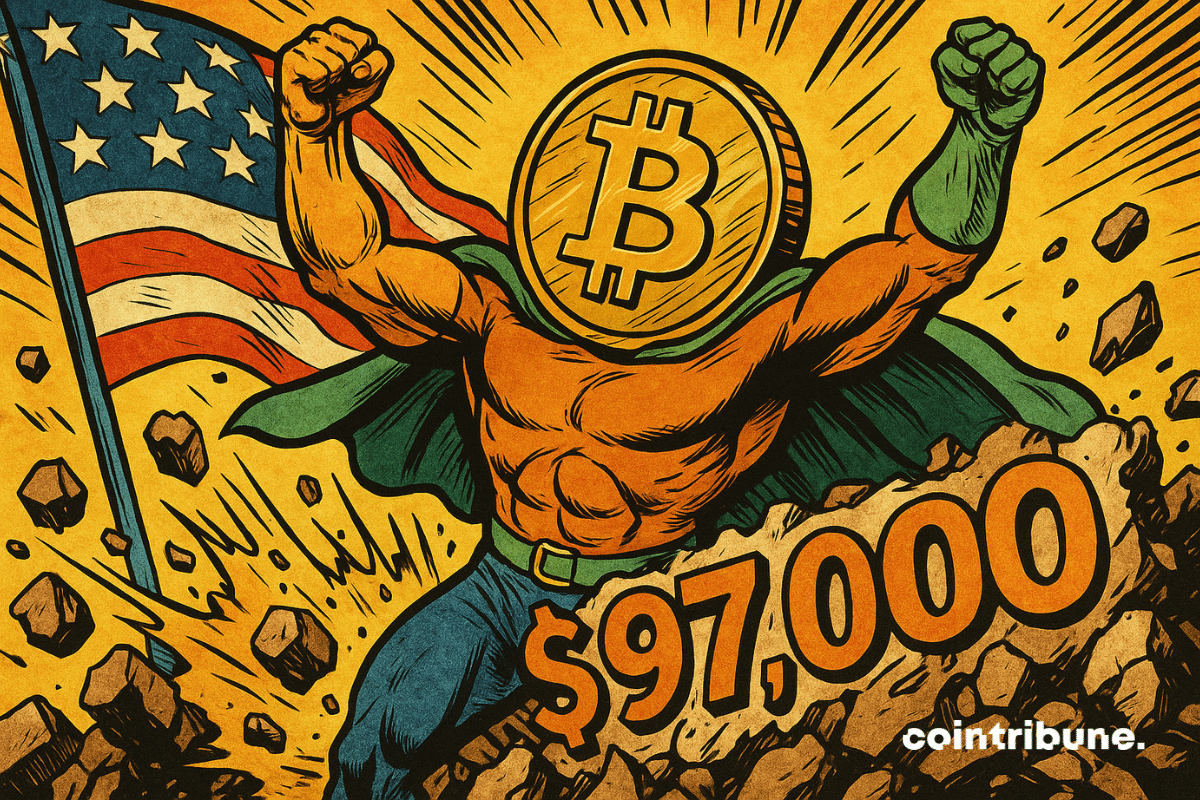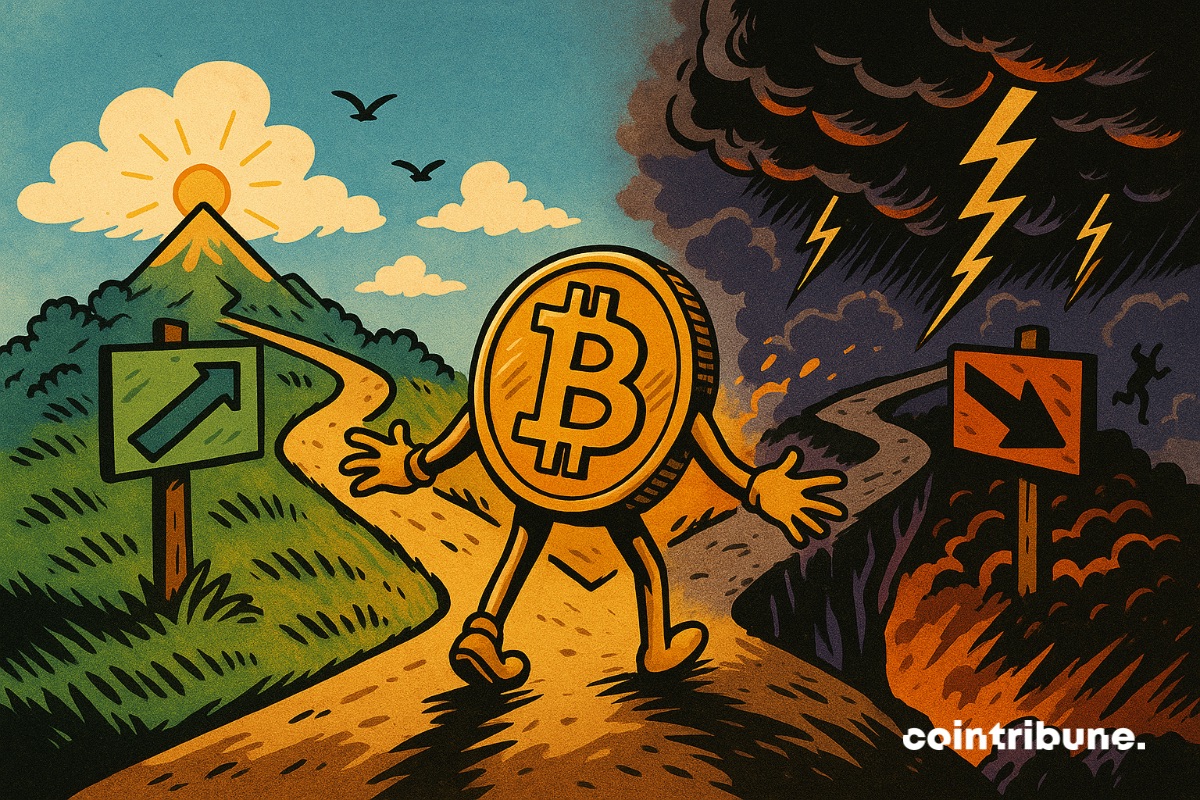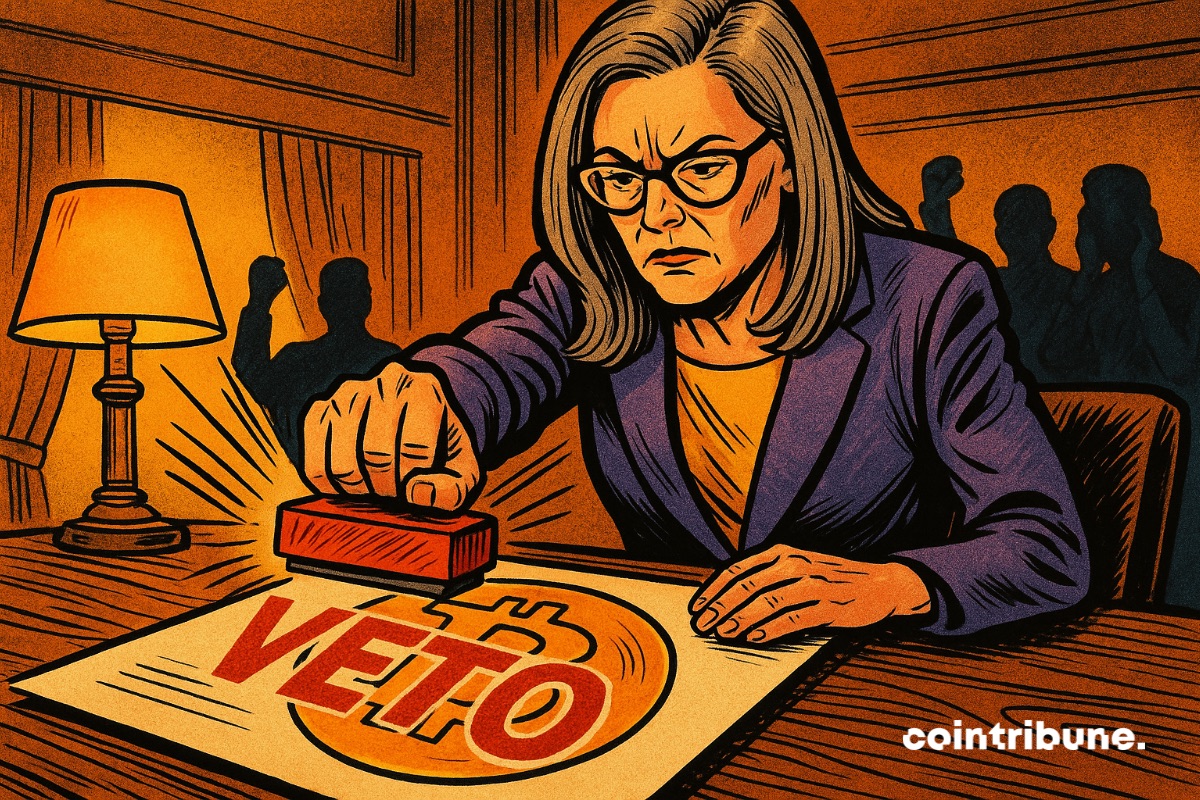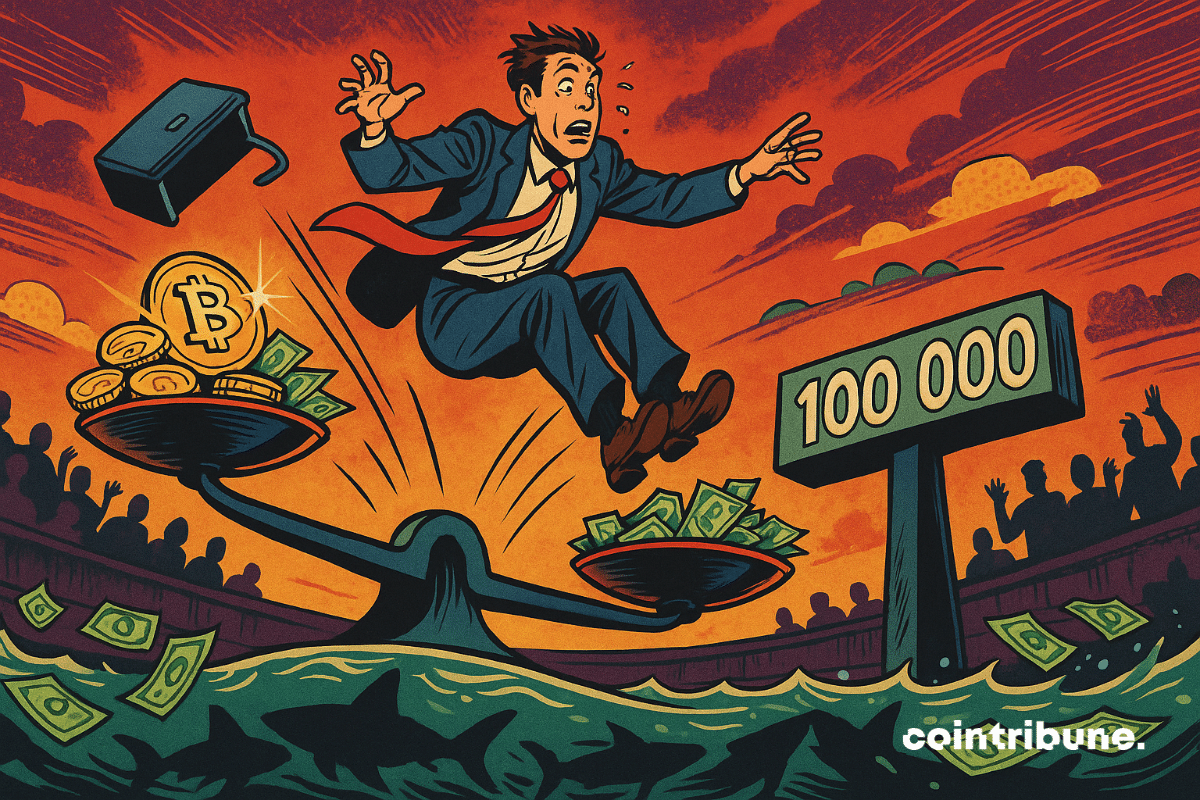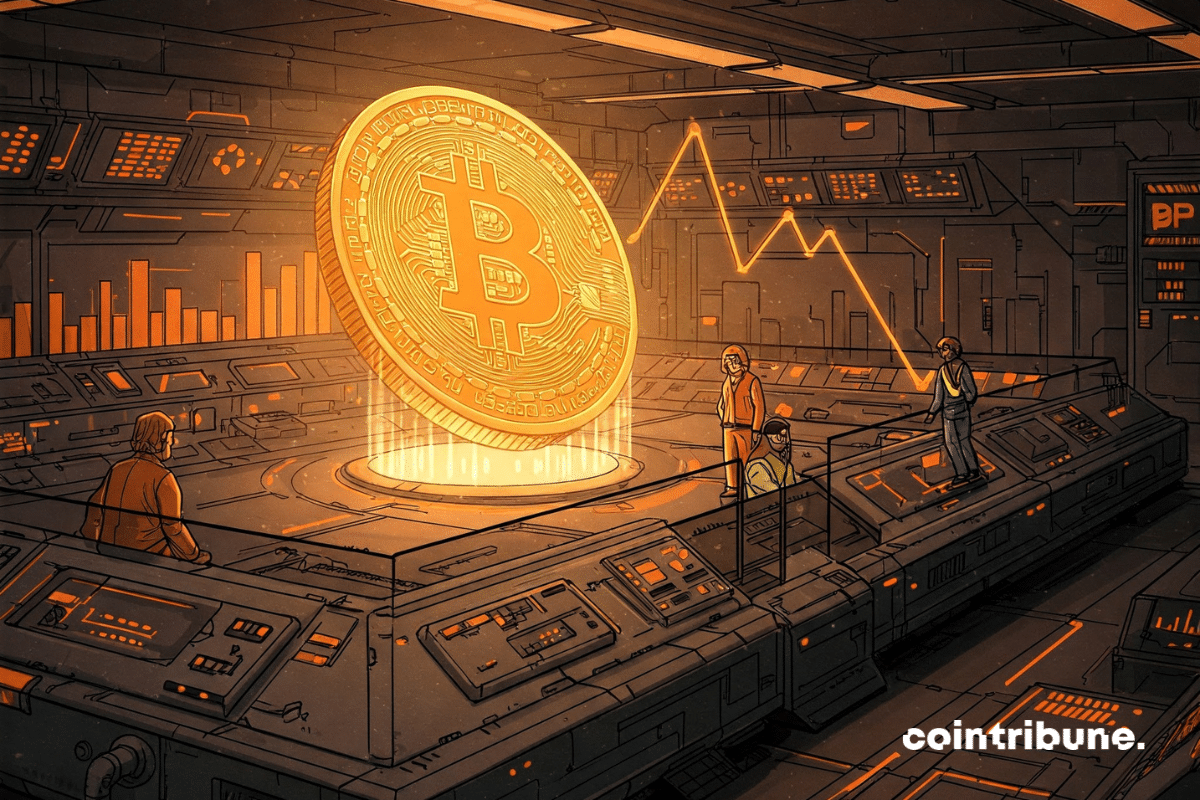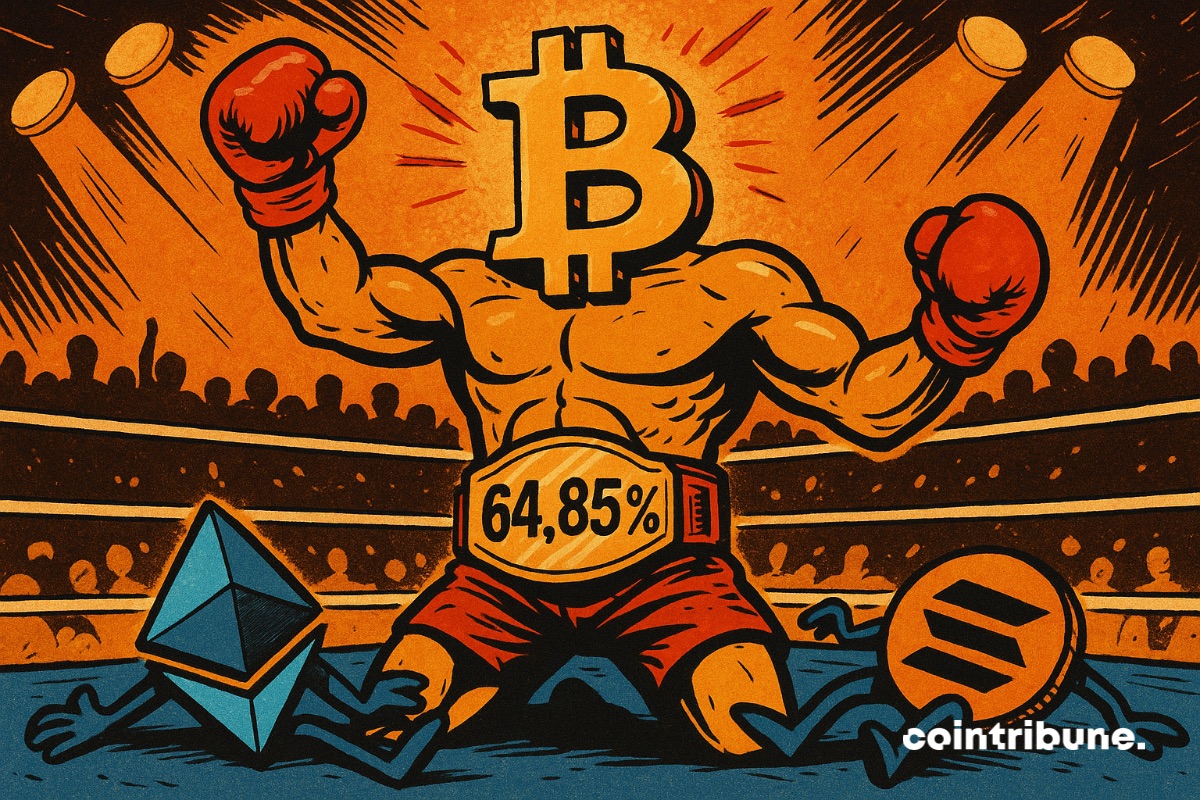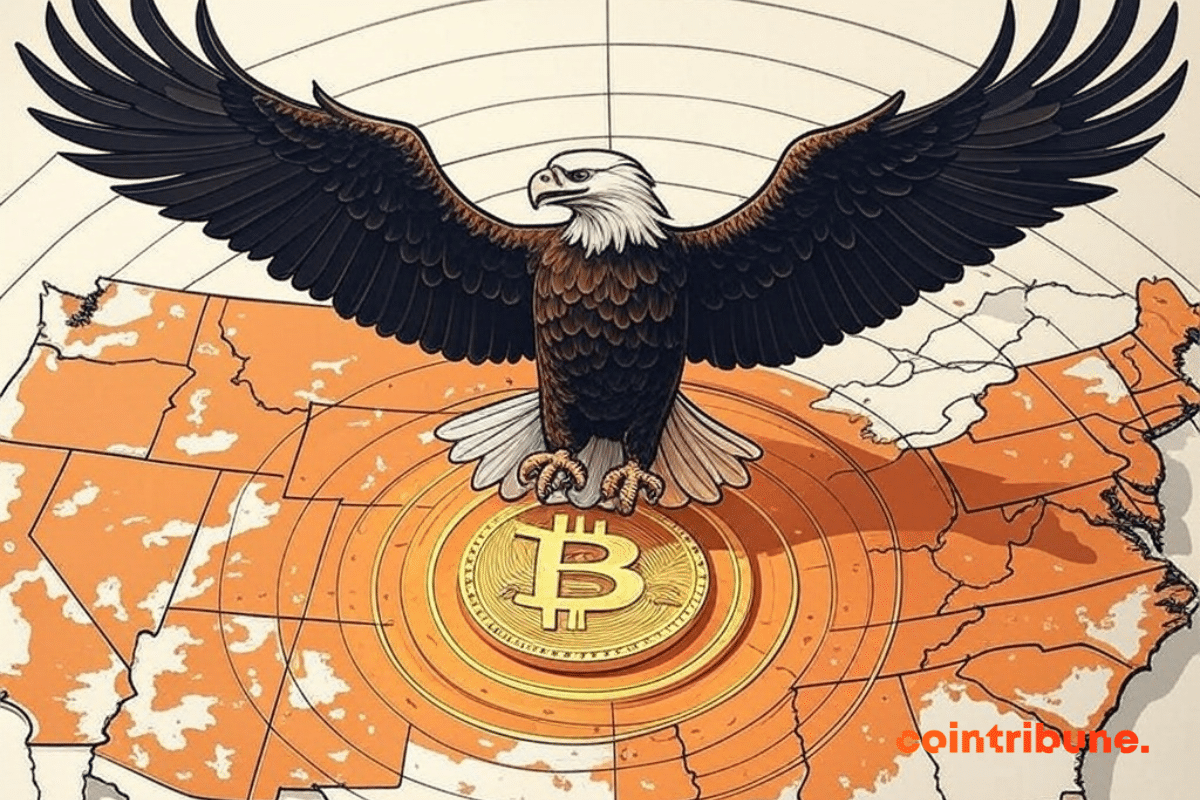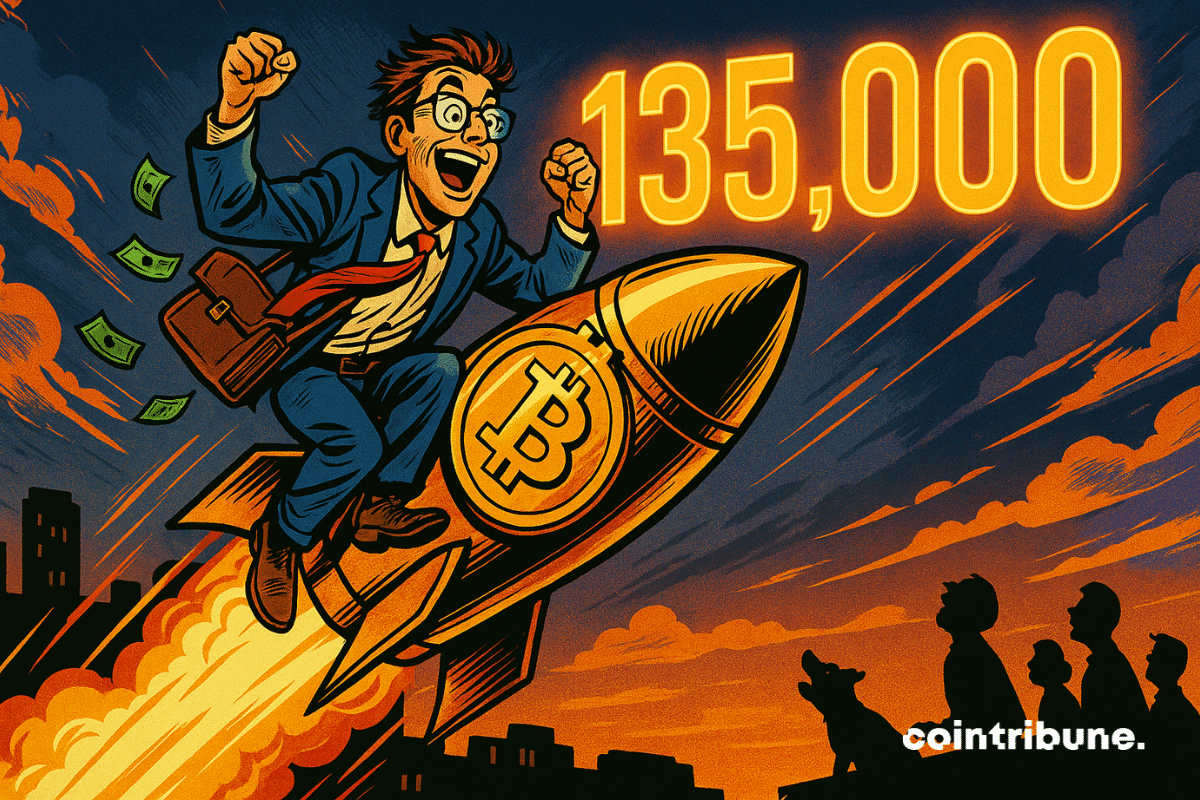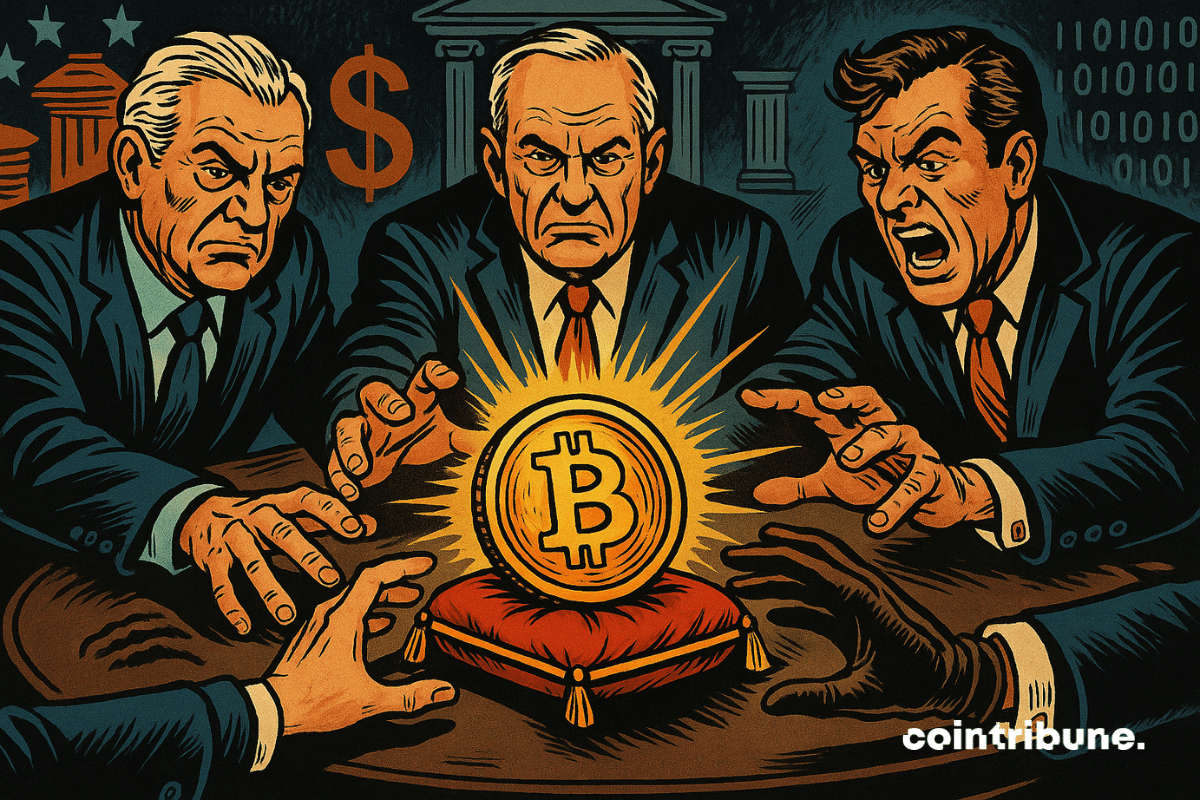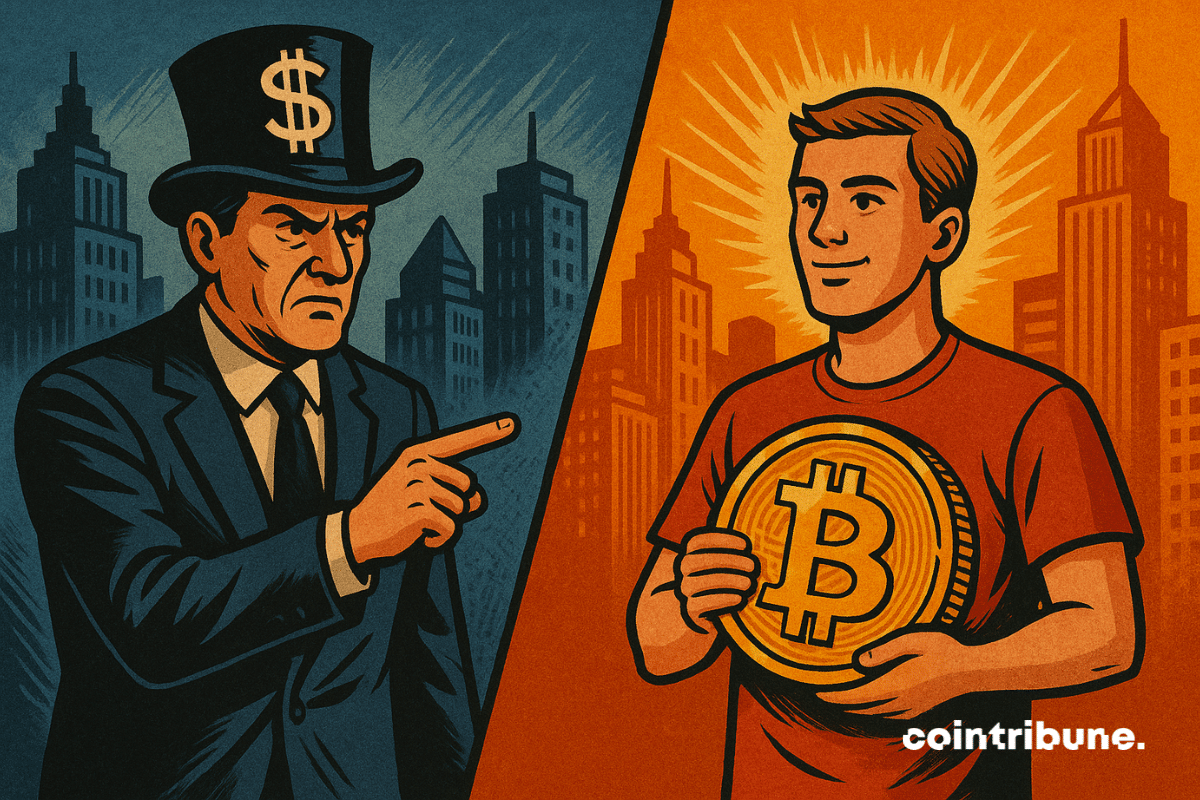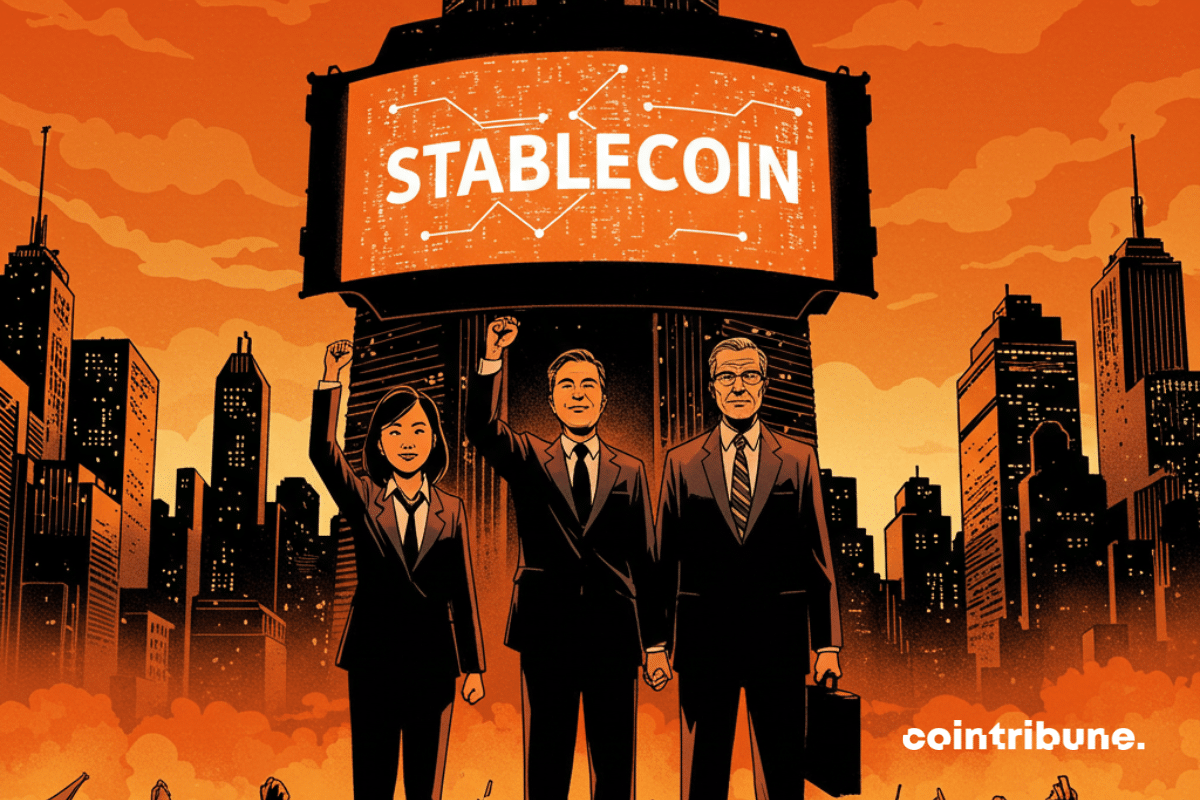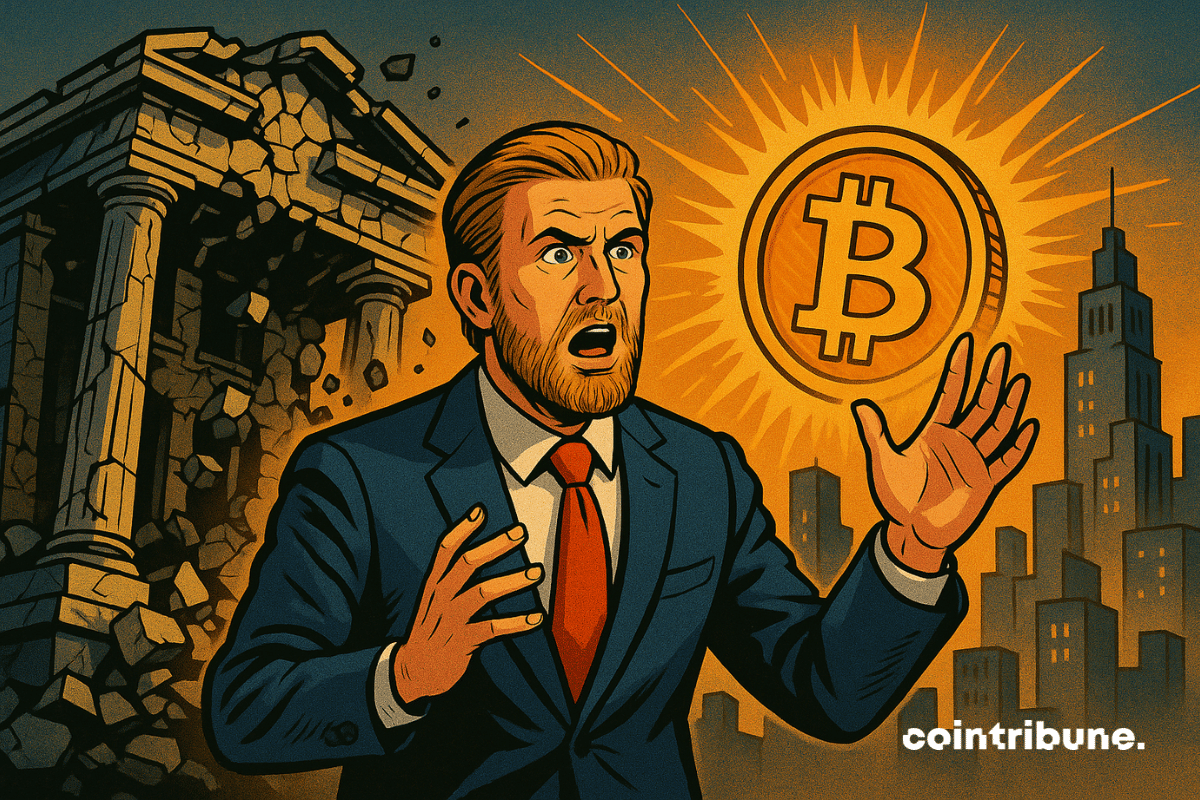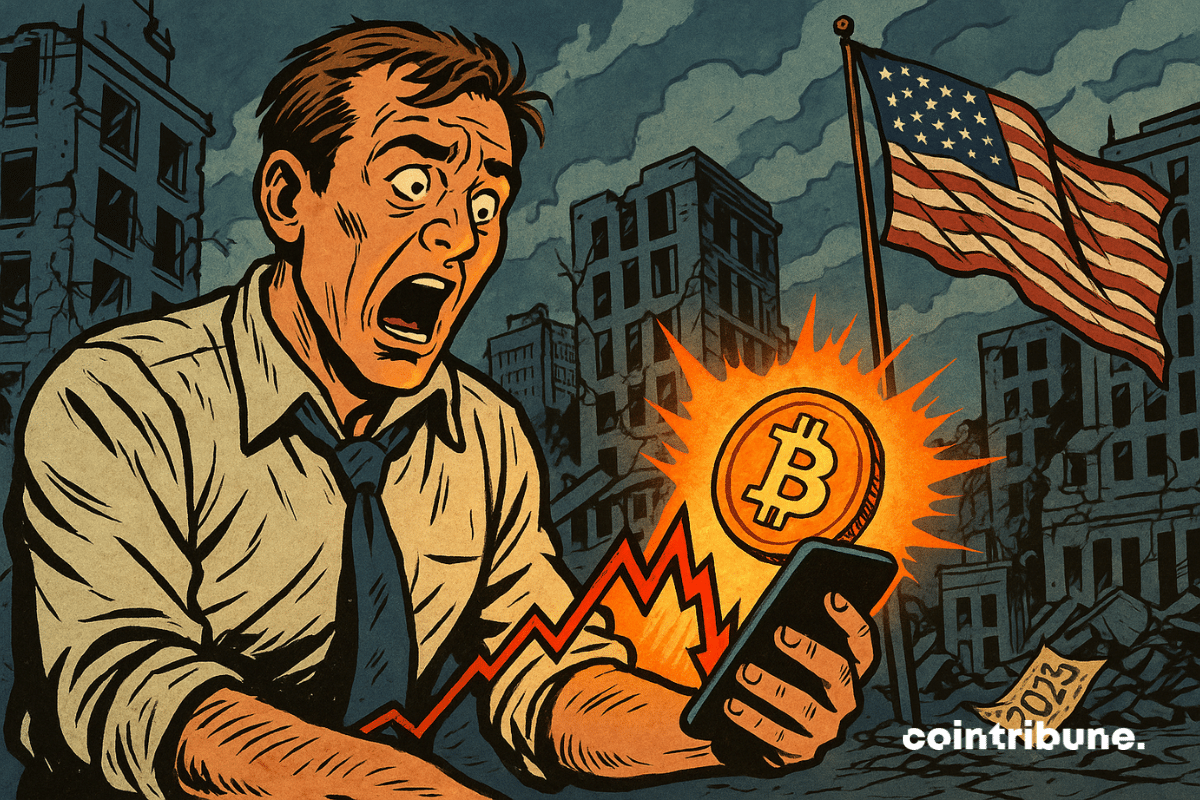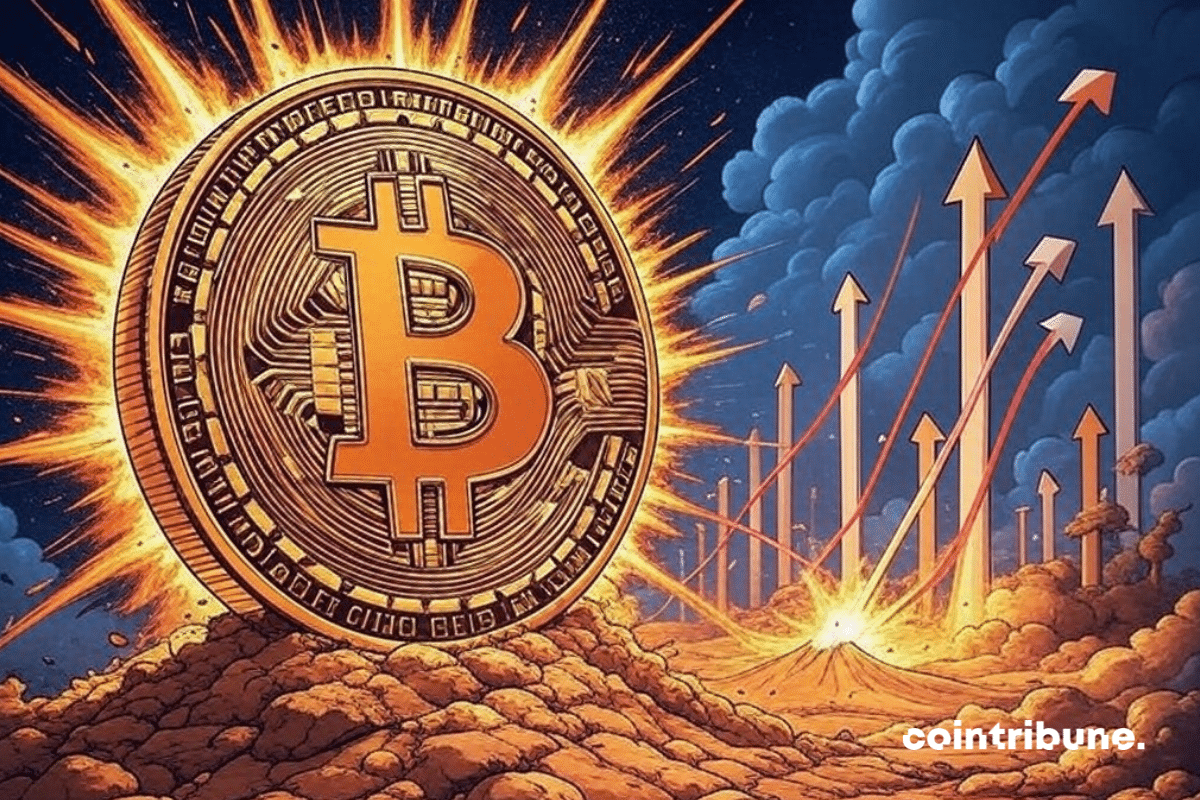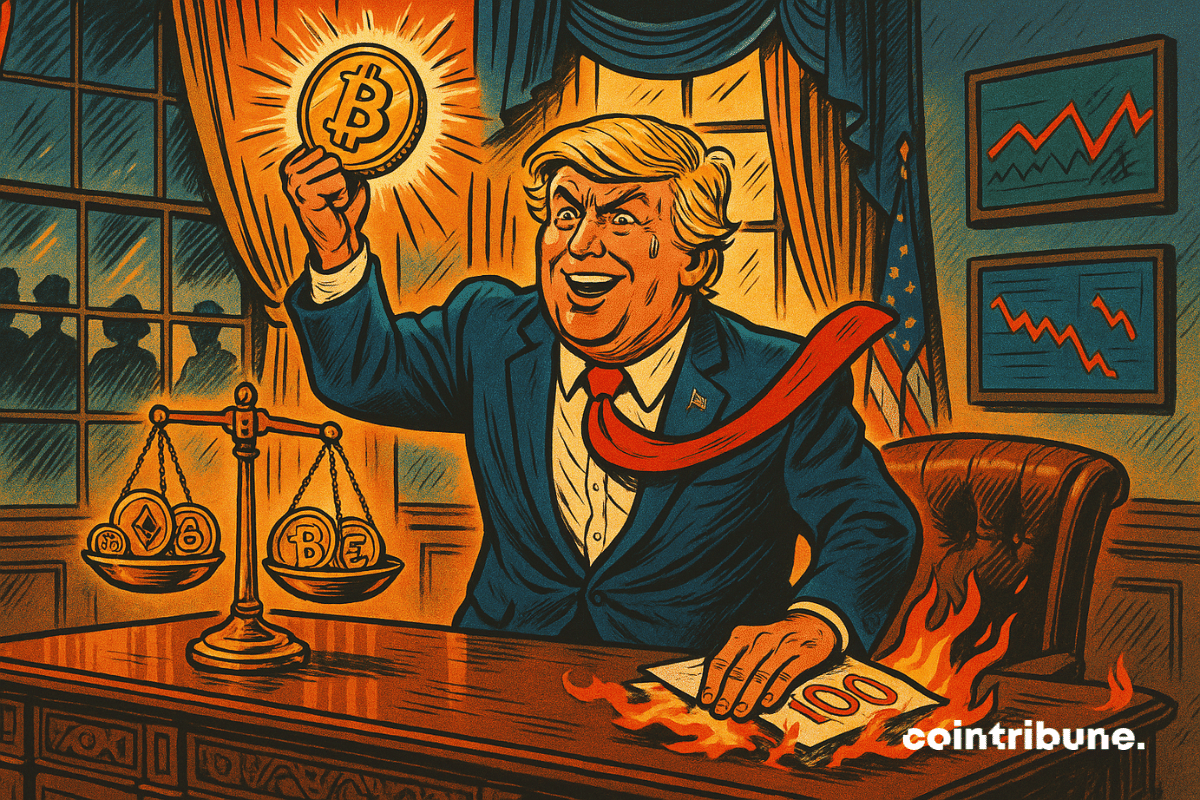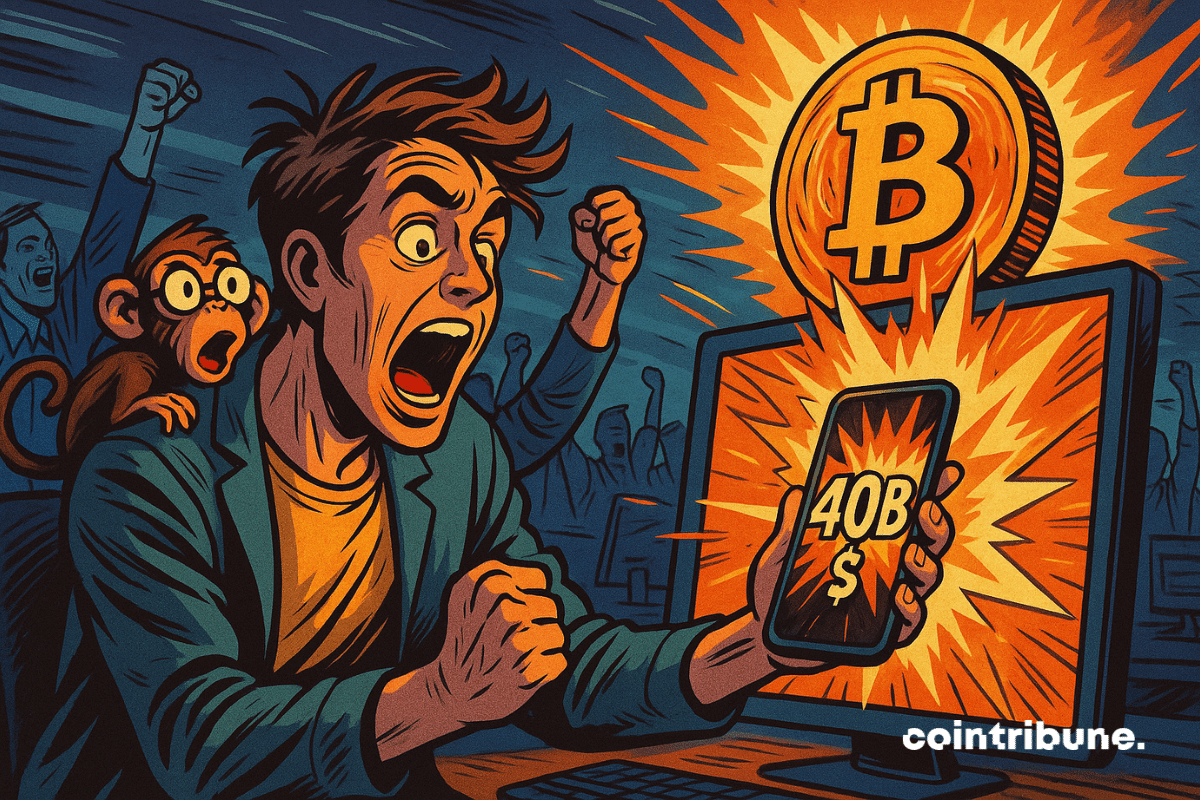Tether merges crypto and AI to create a P2P platform without APIs. Discover all the details in this article!
Theme Bitcoin (BTC)
Bitcoin is holding its breath. In a context where every economic decision can shake the markets, the most coveted digital asset seems ready to reach a new milestone. Amid conflicting signals and feverish expectations, one thing is certain: here are 5 key factors that will make this week anything but ordinary.
Institutional demand for bitcoin is skyrocketing. Last week, U.S. ETFs accumulated 18,644 BTC. In comparison, miners only extracted 3,150. An unprecedented gap is disrupting the traditional balance.
While uncertainty looms over global markets, a clear signal is emerging at the level of bitcoin: on-chain activity is surging. With nearly one million active addresses in 24 hours, a high not seen in six months, attention is shifting back to the fundamentals of the network. BTC, after peaking at $97,000, is oscillating around $94,000. This surge in activity is intriguing: is it a lasting effect or just a fleeting frenzy? Traders are sharpening their analyses and watching for the next impulse.
While the crypto market digests the post-halving calm, a technical setup is quietly attracting attention: the XRP/BTC pair could surge by 30%. Far from a simple bullish scenario, this signal is based on a marked tightening of the Bollinger Bands, often a precursor to sharp movements. For traders, this type of compression is never trivial. It often heralds a resurgence of volatility, in either direction. This time, all indicators are converging towards a possible spike.
The ETH/BTC ratio is dangerously close to the critical level that triggered a spectacular rise in Ethereum in 2019. Technical indicators and proposals from Vitalik Buterin are fueling hopes for a major turnaround.
Bitcoin is a topic of debate. Nassim Nicholas Taleb maintains his frankness. He describes Bitcoin as a "technological tulip." His biting commentary leaves no one indifferent. Thus, let us dive into the heart of his attack to understand his grievances.
Bitcoin continues its triumphant march, surpassing $97,000 and reaching a new peak since February 2025. This dazzling rise comes amid an uncertain global economic context, where the leading cryptocurrency is increasingly establishing itself as a safe haven against recession fears.
May could change everything for bitcoin. As the threat of a global recession looms and tensions between the United States and China intensify, the market holds its breath. A trade agreement could trigger a new bull run... but a failure could plunge BTC into the red.
Arizona has just rejected an ambitious bill aimed at integrating bitcoin into its official reserves. While several states are exploring this bold avenue, Governor Katie Hobbs' veto reignites the national debate on the future of BTC in public management and institutional finance.
For a long time hesitant towards bitcoin, American universities are beginning to make a discreet but decisive shift. Brown University, a pillar of the Ivy League, has just announced a direct exposure to BlackRock's IBIT ETF. This is a first, revealed in an official filing with the SEC, which could redefine the standards for endowment fund allocation. Why this movement now? What amounts are at stake? And what does this strong signal sent by an academic institution in the midst of a reshaping crypto market reveal?
As the symbolic threshold of 100,000 dollars approaches, Bitcoin enters a turbulent zone. Behind the spectacular rise, long-term holders are recording unrealized gains of nearly 350%, a level historically associated with massive profit-taking. This critical signal comes as the market remains vulnerable, hindered by ongoing technical tensions and a demand that struggles to keep pace with potential supply.
With a low of deposits on exchanges, is Bitcoin showing signs of an imminent new bull run? Analysis.
Bitcoin strikes hard: with a price flirting with $97,000 and a market dominance of 64.89%, the queen of crypto reaches its highest level since 2021! Driven by distrust towards altcoins and a tense macro context, BTC crushes the competition and attracts capital.
The CIA discovers that bitcoin tracks better than a double agent: a comical turnaround for a cryptocurrency born against the State, which has become the State's arm. What a flip!
The countdown has begun. Indeed, Bitcoin could reach a new all-time high much sooner than we imagine. A recent analysis by Timothy Peterson, a recognized economist in the Bitcoin network, predicts a surge to $135,000 within the next 100 days. The origin of this projection: the drop in the VIX index, a symbol of a renewed appetite for risk, and an aligned macroeconomic context. This could reignite the bullish ambitions of a market in search of solid catalysts.
Invisible to the eyes of the markets, Alliance Resource Partners (NASDAQ: ARLP) has quietly opened a new front. Indeed, this American coal giant is using its surplus electricity to mine Bitcoin. As a result, $45 million worth of BTC now sits on the company's balance sheet. Thus, away from prying eyes, coal fuels more than just boilers. Let’s explore this bold transformation.
The face of the cryptocurrency market is evolving at a rapid pace. On one side, individuals clinging to every satoshi. On the other, institutions ready to commit colossal sums. However, the price of Bitcoin does not always follow the same trajectory for these two populations. In Dubai, during the Cointelegraph LONGITUDE panel, major players sounded the alarm. According to them, soon only the largest wallets will be able to afford a Bitcoin.
Europe, once hesitant about Bitcoin, wants its MicroStrategy: TBG plans for 260,000 BTC by 2033. A strong plan that tickles the ECB and shakes the markets.
The company led by Michael Saylor announces a strong performance of its bitcoin investments for the first quarter of 2025, but disappoints Wall Street analysts with its overall financial results.
Bitcoin is up 3% on May 1st, briefly reaching $97,400 before dropping back to $96,600. Bullish investors are now preparing to face the psychological resistance of $97,000, while gold is experiencing a significant correction, losing more than 8% since its recent historical highs.
And what if the dollar was no longer the only compass for stablecoins? Around the world, a tide is forming: governments, regulators, and companies want alternatives. Between monetary sovereignty and geopolitical ambitions, crypto is taking an unexpected turn.
At the Token2049 conference in Dubai on April 30, Changpeng "CZ" Zhao, former CEO of Binance, did not mince his words: Europe is almost absent from the debate on crypto adoption. According to Zhao, while countries like the United Arab Emirates and Bhutan are accumulating bitcoin and ethereum as strategic reserves, European countries are moving "nowhere."
And what if banks, the secular pillars of global finance, were living their last years? This is not the warning of a crypto maximalist, but that of Eric Trump. From the podium of Liberty University, the businessman warned: without rapid adoption of cryptos and blockchain, banks could disappear within a decade. Thus, in a context where decentralized finance is gaining ground, this position reveals the flaws of a rigid system faced with a rapidly accelerating technology.
In the face of the contraction of the American economy, bitcoin could paradoxically benefit from it, according to André Dragosch, European head of research at Bitwise. This perspective is explained by the anticipation of interest rate cuts and the weakening of the dollar, two factors particularly favorable to cryptocurrency.
Bitcoin shatters a record in Realized Capitalization, but not in price. Investors are betting on a future increase, while the current stagnation conceals an imminent explosion. Total suspense.
Bunq, the well-known European neobank for digital nomads, is expanding its offering: it's time for cryptocurrencies! The app now allows users to manage savings and crypto in one basket, thanks to Kraken.
The first 100 days of the Trump administration deeply impacted the cryptocurrency industry. Among favorable appointments for the sector, the creation of a strategic reserve of bitcoin, and a trade war with significant consequences, the record remains mixed according to experts, with some even labeling this period as "the 95 worst days in modern presidential history."
The blackout in Spain is an opportunity to remind that the Bitcoin industry could certainly have helped to avoid the disaster.
Fueled by a speculative surge, Bitcoin crosses critical thresholds while global markets remain under pressure. Indeed, on-chain analysis reveals a sharp acceleration in "hot supply," these freshly moved bitcoins that indicate the arrival of new short-term players. The signal is strong, and the momentum powerful. However, behind the bullish trend, one question persists: does this rise rely on solid foundations or on a fragile frenzy?
